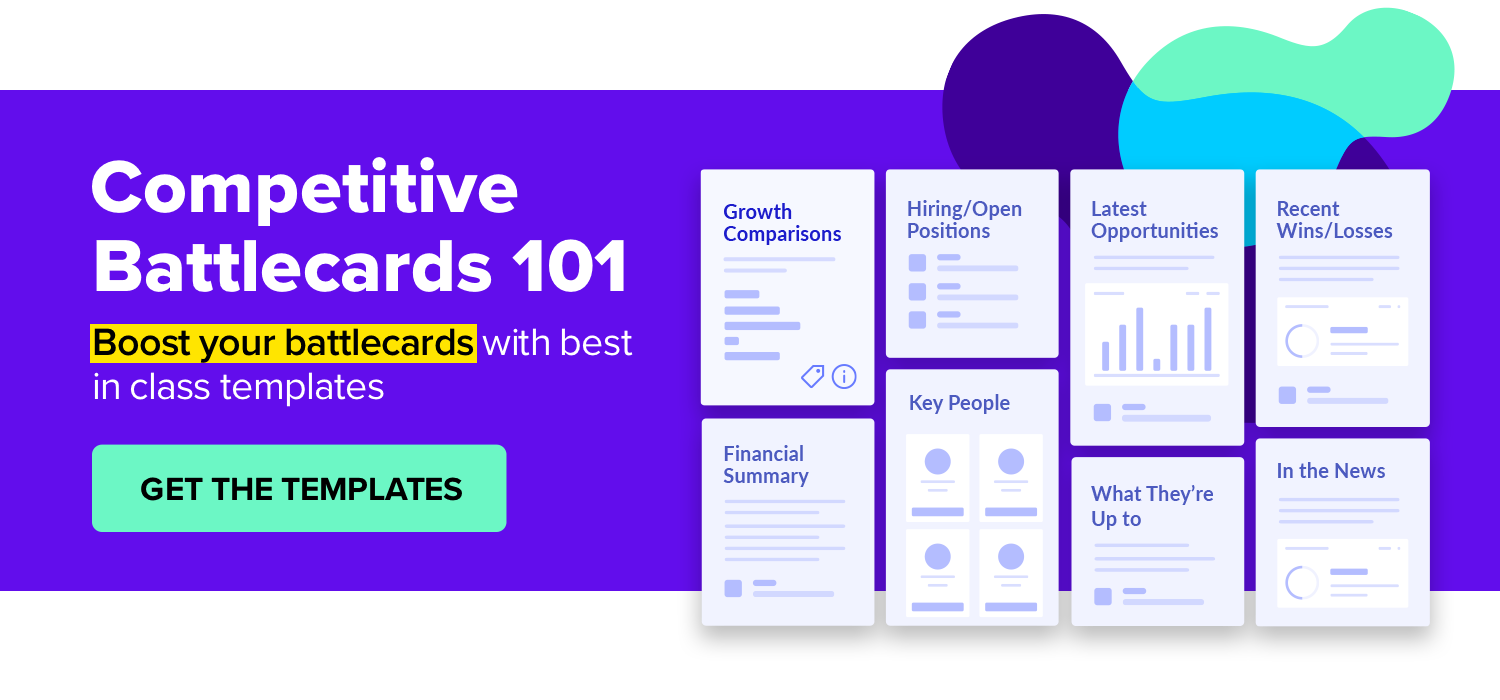Klue Compete
The Competitive Enablement Platform
Learn More
FIND OUT MORE >

A staggering 71 percent of sales enablement leaders said their biggest challenge is the “inability of their reps to connect their offerings to the business issues of their buyers”.
Let that sink in for a minute. Nearly three quarters of sales teams either can’t identify their buyers problems, or they can’t understand how their offerings solve them.
If your sales team can’t do either of these two things… then what are they doing?
According to Forrester, the issue lies in the out-dated selling models that many sales teams are still using. Hailing from the days when customers made purchase decisions by comparing feature checklists, many sales teams are using battlecard templates that are still focused on the product, rather than how they solve their buyers problems. Effective battlecards however, form the connective tissue that weave together the business needs of buyers with usable insights that reps can use to engage customers about meeting those needs.
Through our work with competitive intelligence and sales enablement teams, we’ve seen hundreds of battlecards. We thought it would be helpful to share a few tips on how you can ensure that you’re equipping your sales team with sales enablement content that’s actually useful, and will help win deals.


Customers care about their problems, and their problems only. They don’t care that you have a product you claim will “change their lives”. They don’t want to hear your talking points, and they certainly don’t want to hear about your many product features.
When developing battlecards, write them from the customer’s point of view. Articulate the solutions of your product in a way that’s relevant to your specific buyer personas.
If you work in competitive intelligence, sales enablement or product marketing, a large part of your job might involve developing strategies around your product, market or industry. Dropping buzzwords might come naturally for those powerpoints or reports – but it won’t help your sales team in winning the trust of their buyers, which is crucial to closing deals.
A good test when developing a battlecard is to read it out loud. If you feel unnatural or like a robot when reading it, so will your reps. Write your points in language that can be read verbatim. If you can’t simplify your message to be said out loud, you don’t have a good enough grasp on what you’re trying to say in the first place.
Battlecards should be crafted for specific selling scenarios unique to the buyer persona and their business needs. Your buyer-types will often have different problems to be solved, and a one-size-fits-all approach to your battlecards won’t effectively equip your rep to close that deal.
Teams with well-used sales enablement content often have battlecards developed for specific selling scenarios and frequently engage in scenario modeling to anticipate buyer problems and target the right decision-making response. Engage your team in persona-based buying scenario modeling to make sure you’re game planning effective sales strategies.
While it’s important that your reps understand the products they are selling, don’t forget that they must understand the benefits and solutions these products provide, and proactively connect the rights benefits to the business needs of their buyers.
A good battlecard must contain more than product features. It must identify benefits and business solutions, driven by the common problems faced by different buyer personas.
No buyer wants to hear that your customers report a 99.9% satisfaction level in your product. Especially if you conducted this study yourself. A quick way to take a wrecking ball to the trust built between your reps and potential customers is to lob in a biased fact in an attempt to dismiss an issue.
Give your sales team counterpoints to your competitors’ claims using only objective facts and figures; ones that will build trust and demonstrate the level of respect your reps hold for the intelligence of their prospects.




Competitive Enablement
The topic of Large Language Models (LLMs) has a lot of confusion. Here's what you need to know about how Klue is working with them.


Competitive Enablement
Product Marketing
If your competitive intel game is too strong for automation, too pure for data privacy, and too rebellious for accuracy — then Klue AI is probably not for you.


Let’s do it. Tell us a bit about yourself and we’ll set up a time to wow you.
Let's do it. Tell us a bit about yourself and we'll set up a time to wow you.
XLet's do it. Tell us a bit about yourself and we'll set up a time to wow you.
XSubscribe to get our latest AI functionality and news in your inbox.
XOur Buyer Pulse feature, set to launch in Q2 2024, offers valuable insights into the factors influencing buyer decisions in your pipeline. By signing up for the waitlist, we can better gauge interest and proactively engage with you to streamline the setup and integration process before the feature becomes widely available.
X